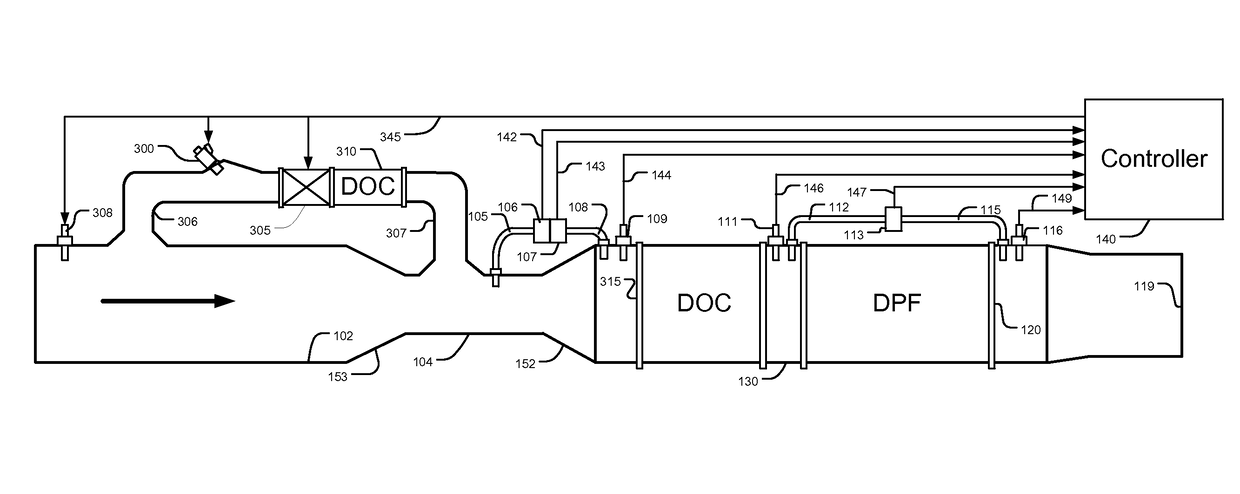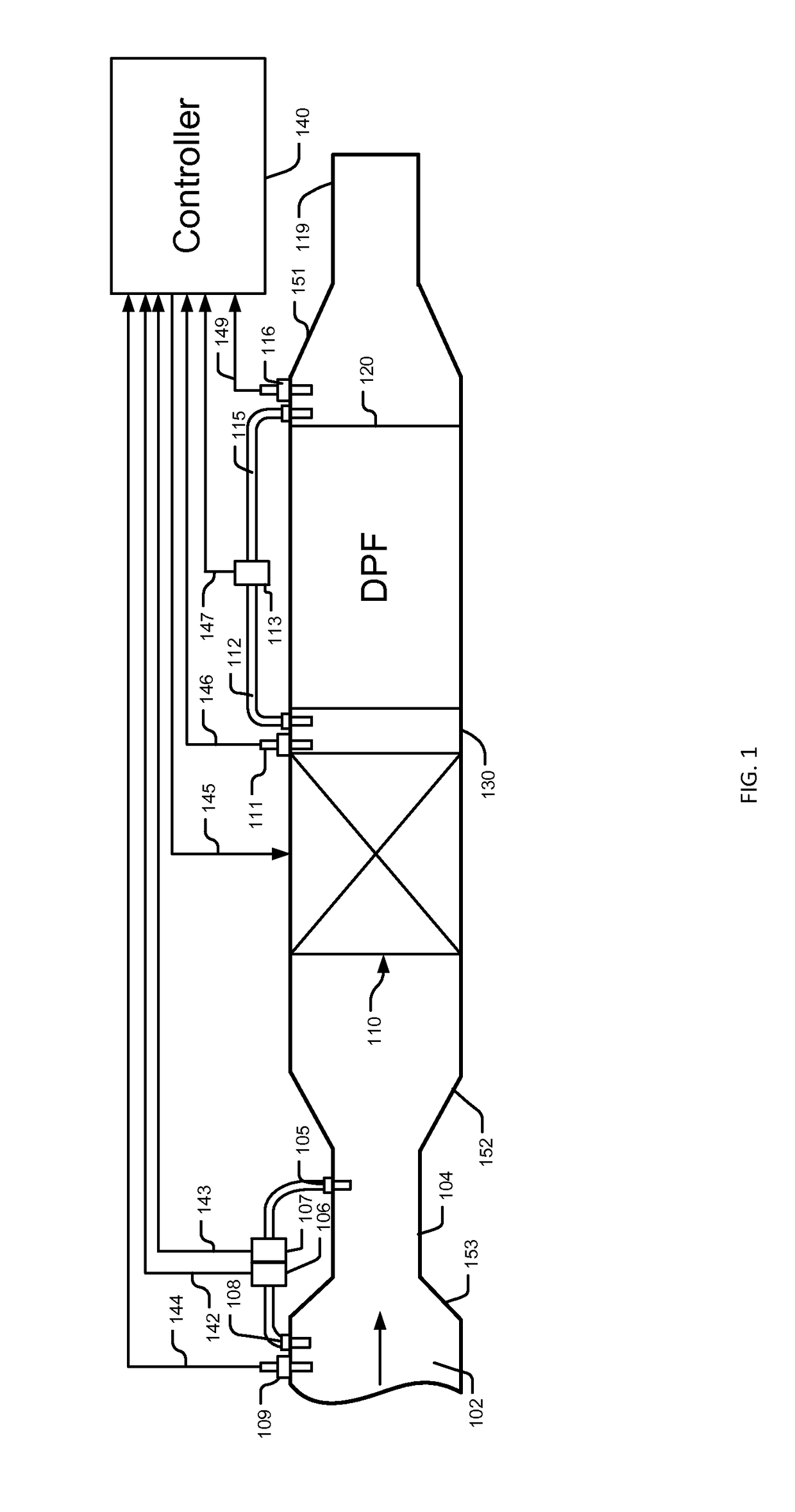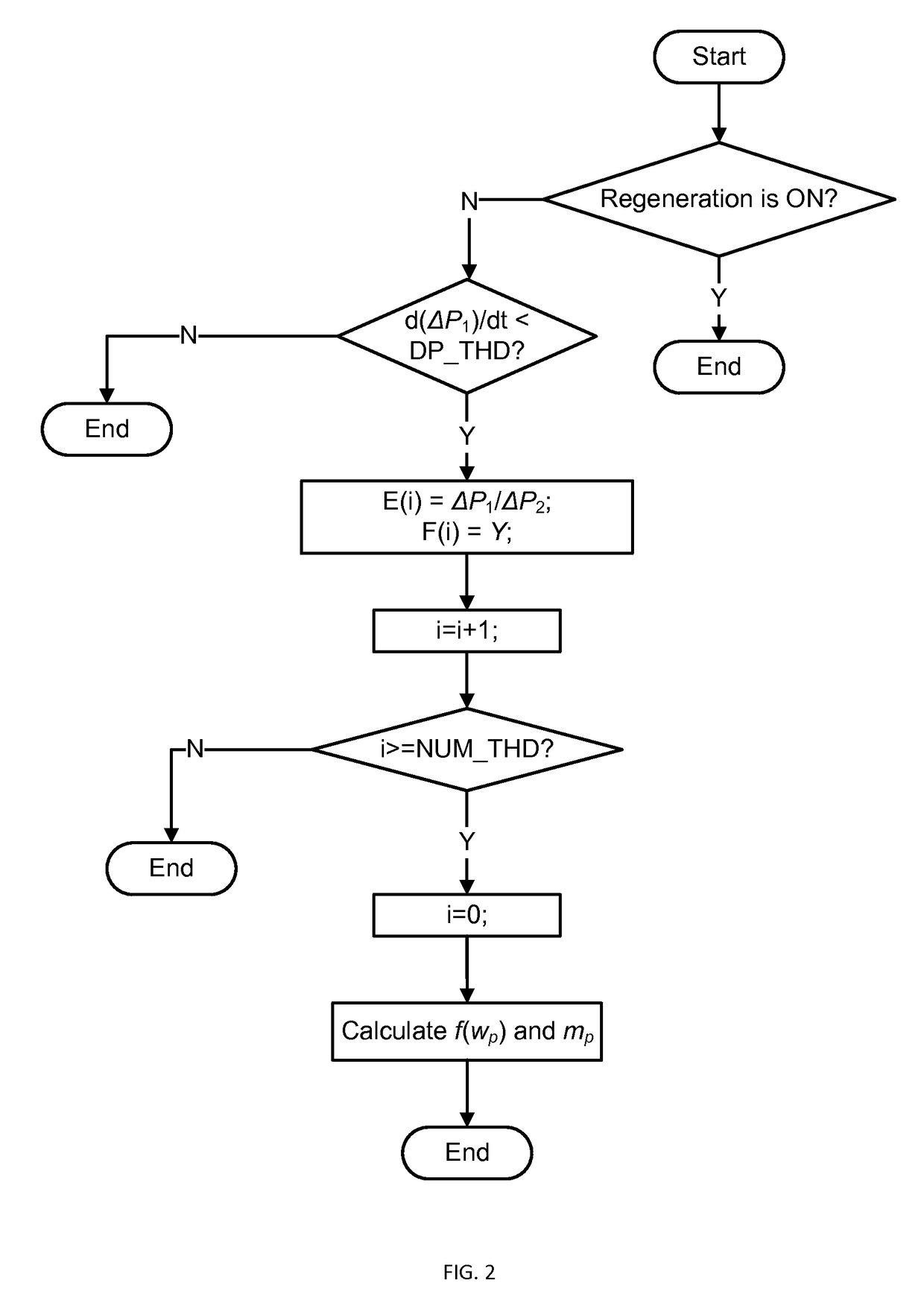Exhaust-gas aftertreatment system with venturi exhaust passage devices
a technology of exhaust gas and venturi, which is applied in the direction of exhaust treatment electric control, machines/engines, mechanical equipment, etc., can solve the problems of un-uniform distribution of pm and lower hc conversion efficiency, and achieve higher doc temperatures, hc conversion efficiency, and hc efficiency. the effect of high efficiency
- Summary
- Abstract
- Description
- Claims
- Application Information
AI Technical Summary
Benefits of technology
Problems solved by technology
Method used
Image
Examples
Embodiment Construction
[0027]Referring to FIG. 1, an exhaust passage 102 is fluidly connected to an exhaust passage 104 with a smaller diameter through a cone transition 153. The exhaust passage 104 is fluidly connected to a DPF package 130 through a cone transition 152. Inside the DPF package 130, a heating device 110 is positioned upstream from a DPF 120. On the exhaust passage 102, through a probe 108, a pressure sensor 106, which communicates to a controller 140 through signal lines 142, is used to detect an exhaust gas pressure in the exhaust passage 102, and a differential pressure sensor 107, which is electrically connected to the controller 140 via signal lines 143, is used for measuring a difference between the pressure in the exhaust pipe 102 and that in the exhaust passage 104 through a probe 105 and the probe 108. The exhaust temperature in the exhaust passage 102, in between the heating device 110 and the DPF 120, and downstream from the DPF 120, are sensed, respectively, by temperature senso...
PUM
 Login to View More
Login to View More Abstract
Description
Claims
Application Information
 Login to View More
Login to View More - R&D
- Intellectual Property
- Life Sciences
- Materials
- Tech Scout
- Unparalleled Data Quality
- Higher Quality Content
- 60% Fewer Hallucinations
Browse by: Latest US Patents, China's latest patents, Technical Efficacy Thesaurus, Application Domain, Technology Topic, Popular Technical Reports.
© 2025 PatSnap. All rights reserved.Legal|Privacy policy|Modern Slavery Act Transparency Statement|Sitemap|About US| Contact US: help@patsnap.com



